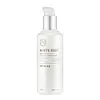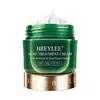What's inside
What's inside
 Key Ingredients
Key Ingredients

 Benefits
Benefits

 Concerns
Concerns

 Ingredients Side-by-side
Ingredients Side-by-side

Water
Skin ConditioningPropanediol
SolventPropylene Glycol Dicaprylate/Dicaprate
EmollientNiacinamide
SmoothingCaprylic/Capric Triglyceride
Masking1,2-Hexanediol
Skin ConditioningCyclopentasiloxane
EmollientPanthenol
Skin ConditioningCyclohexasiloxane
EmollientCetearyl Olivate
PEG-100
HumectantStearyl Stearate
EmollientGlyceryl Stearate
EmollientCetearyl Alcohol
EmollientCaprylic/Capric Glycerides
EmollientSorbitan Olivate
EmulsifyingButylene Glycol
HumectantLupinus Albus Seed Extract
Skin ConditioningBellis Perennis Flower Extract
Skin ConditioningPolyglutamic Acid
Skin ConditioningHexylresorcinol
AntimicrobialSalix Alba Bark Extract
AstringentChenopodium Quinoa Seed Extract
Skin ConditioningAcrylates/C10-30 Alkyl Acrylate Crosspolymer
Emulsion StabilisingCarbomer
Emulsion StabilisingPotassium Hydroxide
BufferingDisodium EDTA
Phenoxyethanol
PreservativeParfum
MaskingWater, Propanediol, Propylene Glycol Dicaprylate/Dicaprate, Niacinamide, Caprylic/Capric Triglyceride, 1,2-Hexanediol, Cyclopentasiloxane, Panthenol, Cyclohexasiloxane, Cetearyl Olivate, PEG-100, Stearyl Stearate, Glyceryl Stearate, Cetearyl Alcohol, Caprylic/Capric Glycerides, Sorbitan Olivate, Butylene Glycol, Lupinus Albus Seed Extract, Bellis Perennis Flower Extract, Polyglutamic Acid, Hexylresorcinol, Salix Alba Bark Extract, Chenopodium Quinoa Seed Extract, Acrylates/C10-30 Alkyl Acrylate Crosspolymer, Carbomer, Potassium Hydroxide, Disodium EDTA, Phenoxyethanol, Parfum
Water
Skin ConditioningPropanediol
SolventCyclopentasiloxane
EmollientCetearyl Olivate
Sorbitan Olivate
EmulsifyingGentiana Scabra Root Extract
Skin ConditioningCetearyl Alcohol
EmollientCarbomer
Emulsion StabilisingArginine
MaskingPaeonia Suffruticosa Root Extract
Skin ProtectingSalvia Officinalis Extract
AntimicrobialSophora Flavescens Extract
Skin ConditioningMelaleuca Alternifolia Leaf Oil
AntioxidantCentella Asiatica Extract
CleansingHamamelis Virginiana Extract
AntiseborrhoeicTriethanolamine
BufferingDisodium EDTA
Laurocapram
Skin ConditioningMenthyl Lactate
MaskingBorneol
MaskingWater, Propanediol, Cyclopentasiloxane, Cetearyl Olivate, Sorbitan Olivate, Gentiana Scabra Root Extract, Cetearyl Alcohol, Carbomer, Arginine, Paeonia Suffruticosa Root Extract, Salvia Officinalis Extract, Sophora Flavescens Extract, Melaleuca Alternifolia Leaf Oil, Centella Asiatica Extract, Hamamelis Virginiana Extract, Triethanolamine, Disodium EDTA, Laurocapram, Menthyl Lactate, Borneol
 Reviews
Reviews

Ingredients Explained
These ingredients are found in both products.
Ingredients higher up in an ingredient list are typically present in a larger amount.
Carbomer is a polymer of acrylic acid. Its main role is to create a gel consistency.
A high amount of carbomer can cause pilling or balling up of products. Don't worry, most products contain 1% or less of carbomer.
Cetearyl alcohol is a mixture of two fatty alcohols: cetyl alcohol and stearyl alcohol. It is mainly used as an emulsifier. Emulsifiers help prevent the separation of oils and products. Due to its composition, it can also be used to thicken a product or help create foam.
Cetearyl alcohol is an emollient. Emollients help soothe and hydrate the skin by trapping moisture.
Studies show Cetearyl alcohol is non-toxic and non-irritating. The FDA allows products labeled "alcohol-free" to have fatty alcohols.
This ingredient is usually derived from plant oils such as palm, vegetable, or coconut oils. There is debate on whether this ingredient will cause acne.
Due to the fatty acid base, this ingredient may not be Malassezia folliculitis safe.
Learn more about Cetearyl AlcoholCetearyl Olivate is an emulsifier and texture enhancer. It is derived from the fatty acids of olive oil and Cetearyl alcohol, and is biodegradable.
As an emulsifier, it is used to prevent oils and waters from separating. It can also
Manufacturers use the name Olivem 1000. This ingredient has been found to preserve the natural microbiome of skin. Having a healthy microbiome helps keep our skin healthy and protects against harmful bacteria. This ingredient is grouped with Sorbitan Olivate under the name Olivem 1000.
Learn more about Cetearyl OlivateCyclopentasiloxane, or D5, is a silicone used to improve texture of products and trap moisture.
D5 is considered lightweight and volatile. Volatile means it evaporates quickly after application. Once evaporated, D5 leaves a thin barrier that helps keep skin hydrated.
It is also an emollient. Emollients help soften the skin and prevent water loss. Silicones create a silky texture in products. D5 helps other ingredients become more spreadable.
Studies show D5 is safe to use in skincare products. We recommend speaking with a skincare professional if you have concerns.
Learn more about CyclopentasiloxaneDisodium EDTA plays a role in making products more stable by aiding other preservatives.
It is a chelating agent, meaning it neutralizes metal ions that may be found in a product.
Disodium EDTA is a salt of edetic acid and is found to be safe in cosmetic ingredients.
Learn more about Disodium EDTAPropanediol is an all-star ingredient. It softens, hydrates, and smooths the skin.
It’s often used to:
Propanediol is not likely to cause sensitivity and considered safe to use. It is derived from corn or petroleum with a clear color and no scent.
Learn more about PropanediolSorbitan Olivate is created from the fatty acids in olive oil and sorbitol.
This ingredient is an oil in water emulsifier. It helps stabilize a product by preventing oils and waters from separating. Sorbitan Olivate also helps hydrate the skin.
Manufacturers sell sorbitan olivate under the name OliveM 1000. OliveM 1000 a multifunctional ingredient. It is self-emulsifying. According to a manufacturer, OliveM 1000 does not disrupt natural skin biome.
Due to its olive oil base, this ingredient may not be fungal-acne safe.
Learn more about Sorbitan OlivateWater. It's the most common cosmetic ingredient of all. You'll usually see it at the top of ingredient lists, meaning that it makes up the largest part of the product.
So why is it so popular? Water most often acts as a solvent - this means that it helps dissolve other ingredients into the formulation.
You'll also recognize water as that liquid we all need to stay alive. If you see this, drink a glass of water. Stay hydrated!
Learn more about Water